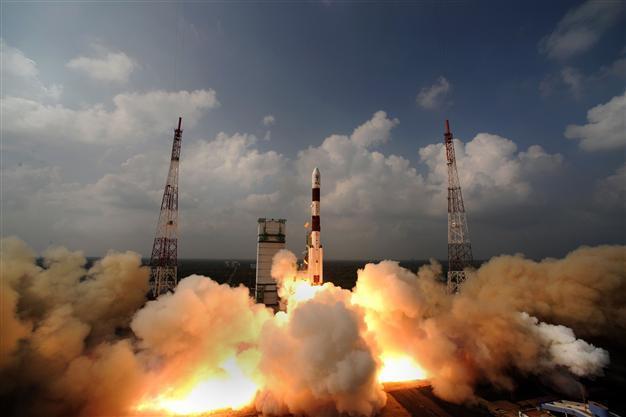Indian Mars mission suffers glitch but 'no setback'
NEW DELHI - Agence France-Presse

This handout photograph released by the Indian Space Research Organisation (ISRO) on November 6, 2013, shows the PSLV-C25 rocket carrying the Mars Orbiter Spacecraft blasting off from the launch pad at Sriharikota on November 5, 2013. AFP photo
India's Mars spacecraft suffered a brief engine failure Monday as scientists tried to move it into a higher orbit around Earth, but controllers denied any setback to the ambitious low-cost mission.The Mars Orbiter Mission, which blasted off on November 5 for a 11-month trip to the Red Planet, is being launched on its way via an unusual "slingshot" method for interplanetary journeys.
Lacking a large enough rocket to blast directly out of Earth's atmosphere and gravitational pull, the Indian spacecraft is orbiting Earth until the end of the month while building up enough velocity to break free.
On Monday, during a fourth repositioning to take it 100,000 kilometres (62,000 miles) from Earth, the thruster engines briefly failed, leading the auto-pilot to take over. "It's not a setback at all. Tomorrow again we'll raise the orbit to 100,000 kilometres," a spokesman for the Indian Space Research Organisation (ISRO), Deviprasad Karnik, told AFP.
The spacecraft is currently at an orbit of 78,276 kilometres and will be raised again at 5 am Tuesday (2330 GMT Monday), an ISRO statement said.
India has never before attempted interplanetary travel and more than half of all missions to Mars have ended in failure, including China's in 2011 and Japan's in 2003.
The cost of the project, at 4.5 billion rupees ($73 million), is less than a sixth of the $455 million earmarked for a Mars probe by NASA which will launch later this month.
ISRO chairman K. Radhakrishnan has called the mission a "turning point" for India's space ambitions and one which would go on to prove its capabilities in rocket technology.
















